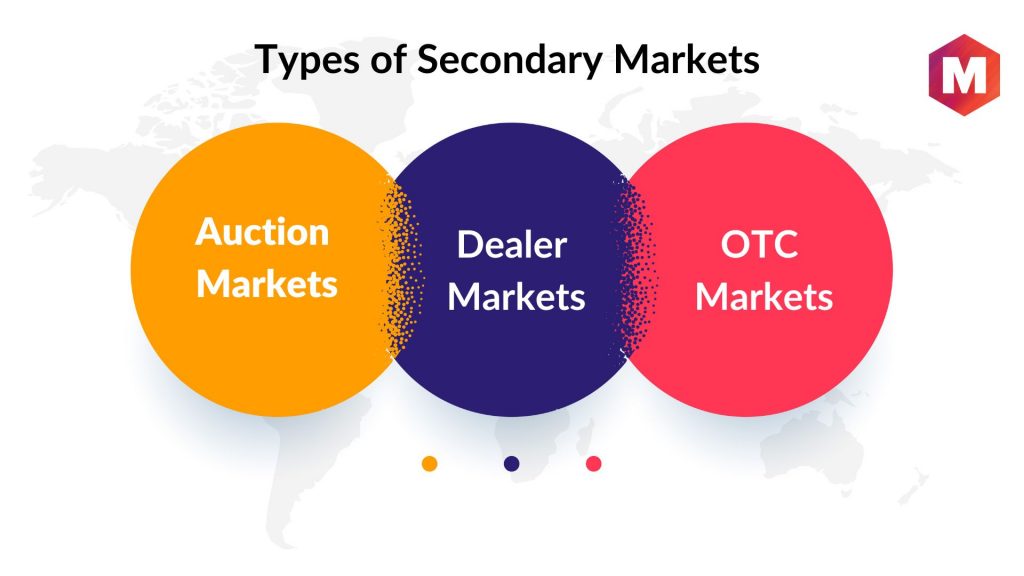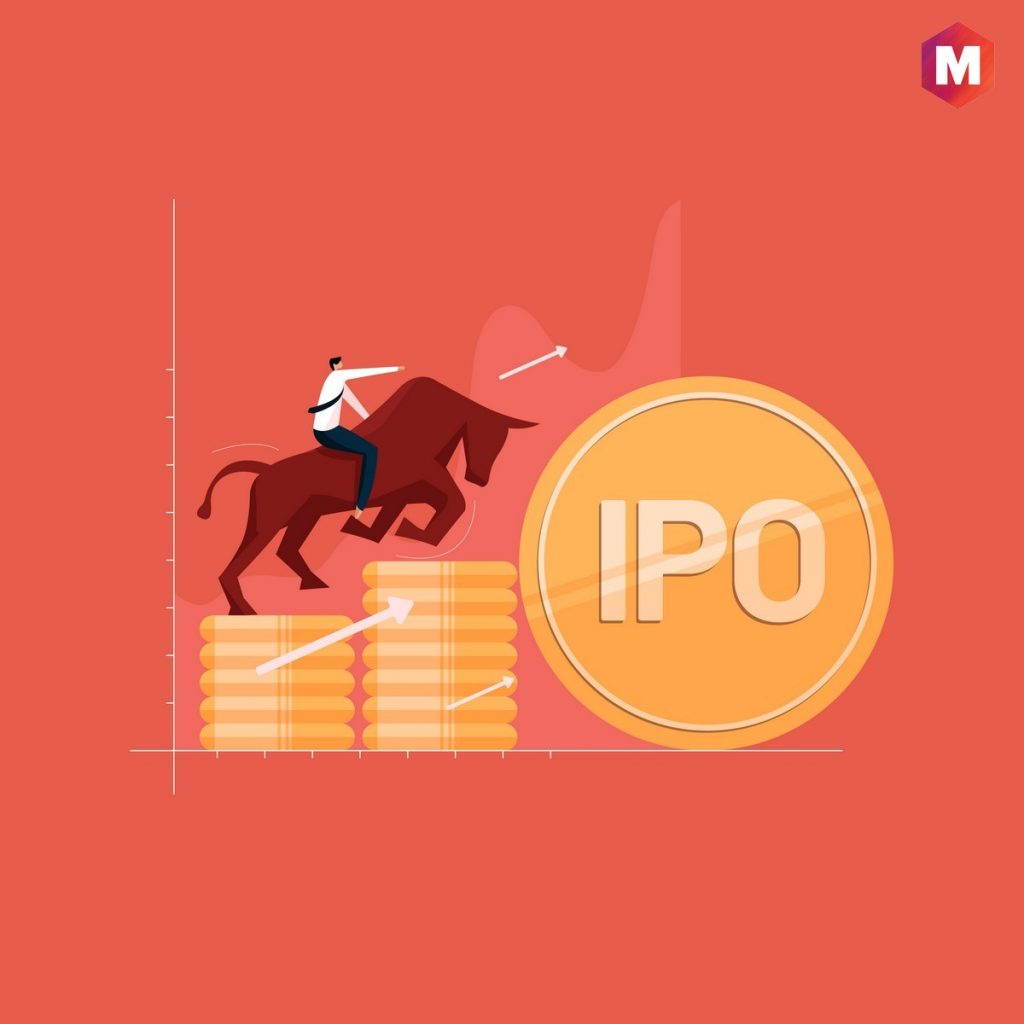Table of Contents
What is the Secondary Market?
The Secondary Market is where investors trade securities they already own. It is also called the aftermarket and is often abbreviated as SM. The secondary market contrasts with the primary market, where securities are first sold to investors.
Investors who buy in the secondary market usually do so because they believe that the security has become undervalued since it was originally issued, or because they hope to cash in on any increased value that may have occurred due to external factors such as an improvement in the issuer’s overall financial health or industry conditions.
However, secondary market activity can also be driven by other motivations such as a desire to invest additional funds in a security that has performed well in the past, or simply to unload a position that has lost value and is now considered to be a liability.
Secondary Market Definition
A secondary market is defined as a market where securities are traded after being initially offered in the primary market. The secondary market includes both equity markets and debt markets. The national exchanges, such as the New York Stock Exchange (NYSE) and the NASDAQ, are where stocks are bought and sold after being initially offered to the public.
There are several different types of securities that can be traded in the secondary market, including stocks, bonds, and derivatives. The secondary market is important because it provides liquidity to investors who want to cash out their investments, and it also allows investors to buy and sell securities without having to go through the process of initial public offering (IPO).
Description
Secondary markets are where most commonly traded securities, such as stocks and bonds, are bought and sold after their initial public offering (IPO). Over-the-counter (OTC) markets and exchange-traded securities are two examples of secondary markets.
Other investors, such as mutual funds, also buy and sell securities in secondary markets. The Securities and Exchange Commission (SEC) regulates secondary markets to protect investors and ensure that they are fair and orderly.
Types of Secondary Markets
1. Auction markets
In an auction market, securities are traded through a centralized exchange. The exchange acts as a middleman between buyers and sellers, and it sets the price of the security based on supply and demand. The most well-known auction market is the New York Stock Exchange (NYSE).
2. Dealer markets
In a dealer market, securities are traded between dealers, rather than through a centralized exchange. Dealers are typically banks or other financial institutions that buy and sell securities for their own accounts. The price of a security in a dealer market is based on the current supply and demand, as well as the dealer’s own inventory. The Nasdaq Stock Market is an example of a dealer market.
3. OTC markets
Over-the-counter (OTC) markets are decentralized markets where securities are traded directly between two parties, without the need for a centralized exchange. OTC markets are often less regulated than other types of markets, and they can be riskier because there is no third party to guarantee the trade. Nevertheless, the OTC market plays an important role in the Secondary Market by providing liquidity for securities that are not listed on a centralized exchange.
Importance of a Secondary Market
The Secondary Market is important for several reasons
- First, it provides liquidity to investors who want to cash out their investments. Second, it allows investors to buy and sell securities without having to go through the process of an IPO.
- Third, the Secondary Market helps to ensure that the price of a security is based on true supply and demand, rather than on the whims of a small group of initial investors.
- Fourth, the Secondary Market can provide valuable information about a security that is not available in the primary market. For example, secondary market activity can be used to gauge investor sentiment about a particular stock.
- Finally, the Secondary Market helps to ensure that capital is allocated efficiently by allowing investors to buy and sell securities as their needs change.
The Secondary Market is an important part of the overall financial system, and it plays a vital role in ensuring that capital is allocated efficiently. Secondary market activity can provide valuable insights into investor sentiment, and it can also help to ensure that the price of a security reflects true supply and demand.
Primary and Secondary Markets
The primary market is the market where securities are first sold to the public. The secondary market is the market where those same securities are traded after they have been initially offered.
Let us understand the difference between both on different grounds
1. Nature of Transaction: The primary market is the market for new securities, where companies sell shares for the first time. The secondary market is the market for existing securities, where investors trade amongst themselves.
2. Relation to Shares: In a primary market transaction, a company sells new shares to raise capital. In a secondary market transaction, an investor buys or sells shares that were previously issued by the company.
3. Security Sale Rate: The sale rate in a primary market transaction is set by the issuing company, while the sale rate in a secondary market transaction is determined by supply and demand.
4. Verbage: In a primary market transaction, the terms “underwriter” and “IPO” are used. In a secondary market transaction, the terms “broker” and “secondary market” are used.
5. Payment Party: In a primary market transaction, the issuing company receives payment for the shares. In a secondary market transaction, the investor who buys the shares pays the broker.
6. Related Parties: In a primary market transaction, the issuing company and the underwriter are related parties. In a secondary market transaction, the buyer and seller are unrelated parties.
7. Price Fluctuation: The price of a security in the primary market is fixed by the issuing company. The price of a security in the secondary market fluctuates based on supply and demand.
8. Share Path: In a primary market transaction, shares are sold by the issuing company to investors. In a secondary market transaction, shares are traded amongst investors.
IPOs and Secondary Markets
An IPO (initial public offering) is a type of primary market transaction. In an IPO, a company sells new shares to the public for the first time. The Secondary Market is the market where those same shares are traded after they have been initially offered.
IPOs are a way for companies to raise capital, and they are also a way for investors to get access to new securities. Secondary market activity can provide valuable insights into investor sentiment, and it can also help to ensure that the price of a security reflects true supply and demand.
Secondary Market Pricing
Pricing in the secondary market is determined by supply and demand. Secondary market activity can provide valuable insights into investor sentiment, and it can also help to ensure that the price of a security reflects true supply and demand.
When there is high demand for security, the price will go up. When there is a low demand for security, the price will go down. Secondary market activity can help to ensure that the price of a security reflects true supply and demand.
Multiple Markets
There are multiple secondary markets, including the stock market, the bond market, and the commodities market. In each of these markets, securities are traded amongst investors.
How do Secondary Markets work?
Working of secondary markets can be done in two ways
The first way is that the shares are transferred from one investor to another without the company’s involvement. The second way is that the company itself buys back the shares from the investors.
In a first way, an investor who wants to sell his shares contacts a broker, who then finds a buyer for the shares. The broker then arranges for the transfer of the shares, and the investor receives payment from the buyer. In a second way, the company buys back its own shares from investors. This is typically done when the company wants to reduce the number of outstanding shares.
Advantages of the Secondary Market
The secondary market has several advantages for both companies and investors.
For companies, the secondary market provides a way to raise capital without having to go through the time-consuming and expensive process of an IPO. For investors, the secondary market provides liquidity, which is the ability to buy or sell a security quickly and at a fair price.
The secondary market also provides price discovery, which is the process of finding out what a security is worth. Secondary market activity can help to ensure that the price of a security reflects true supply and demand.
Disadvantages of the Secondary Market
There are also some disadvantages to the secondary market. For companies, the secondary market can be a source of shareholder activism, which is when investors try to influence the company’s management. Secondary market activity can also lead to price volatility, which is when the price of a security goes up and down rapidly.
For investors, the secondary market can be a source of fraud. There have been cases where companies have sold shares to investors without disclosing all of the relevant information. Secondary market activity can also be risky, and investors can lose money if they buy shares that go down in value.
Conclusion!
As you can see, many different types of financial markets exist in the world. Each one plays a vital role in the global economy. Understanding how these markets work is essential for anyone interested in investing or working in the financial sector.
Secondary markets are just as important as primary markets, if not more so. They provide a place for investors to buy and sell securities that have already been issued. This secondary market activity can help drive the prices of securities and can provide liquidity for investors.
There are many different types of secondary markets, each with its own set of rules and regulations. It’s important to understand how these markets work before participating in them.
Liked this post? Check out the complete series on Marketing


